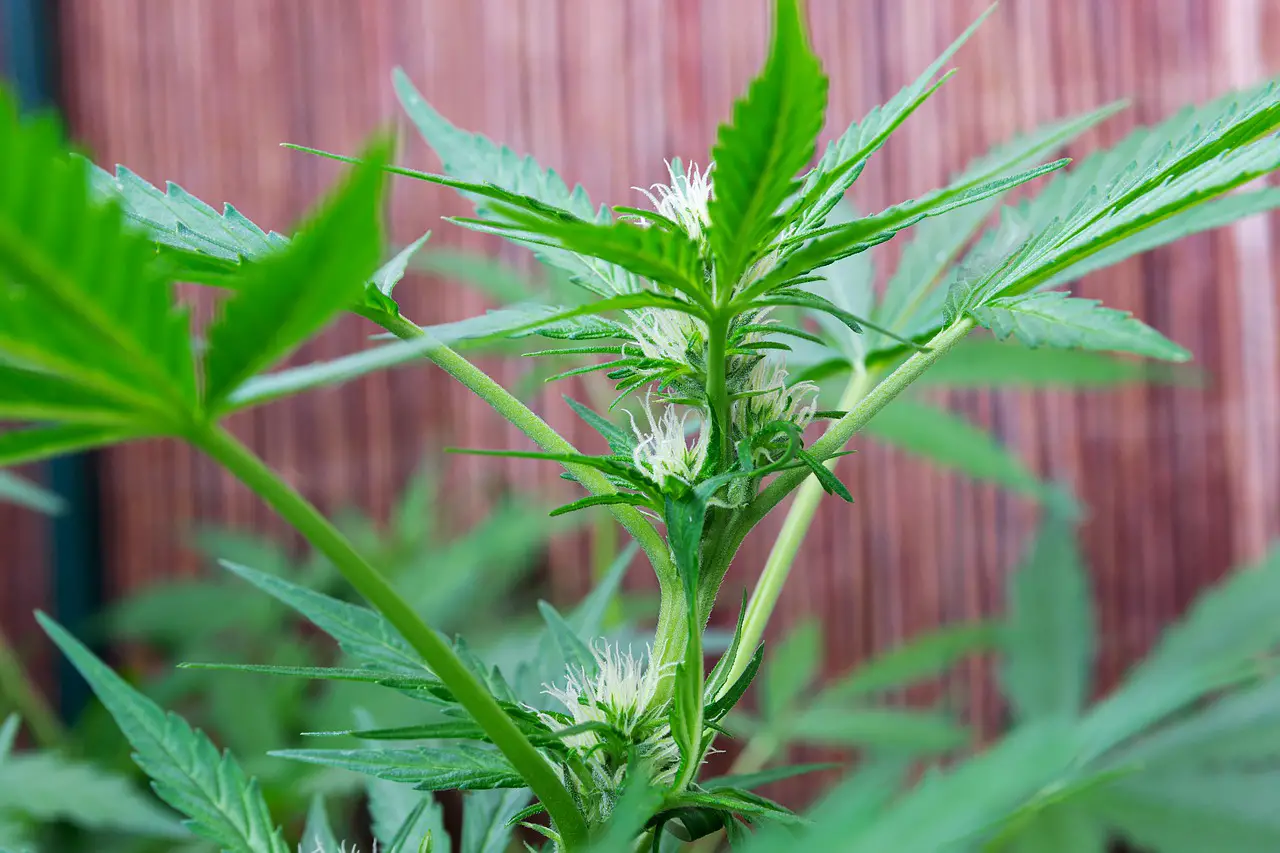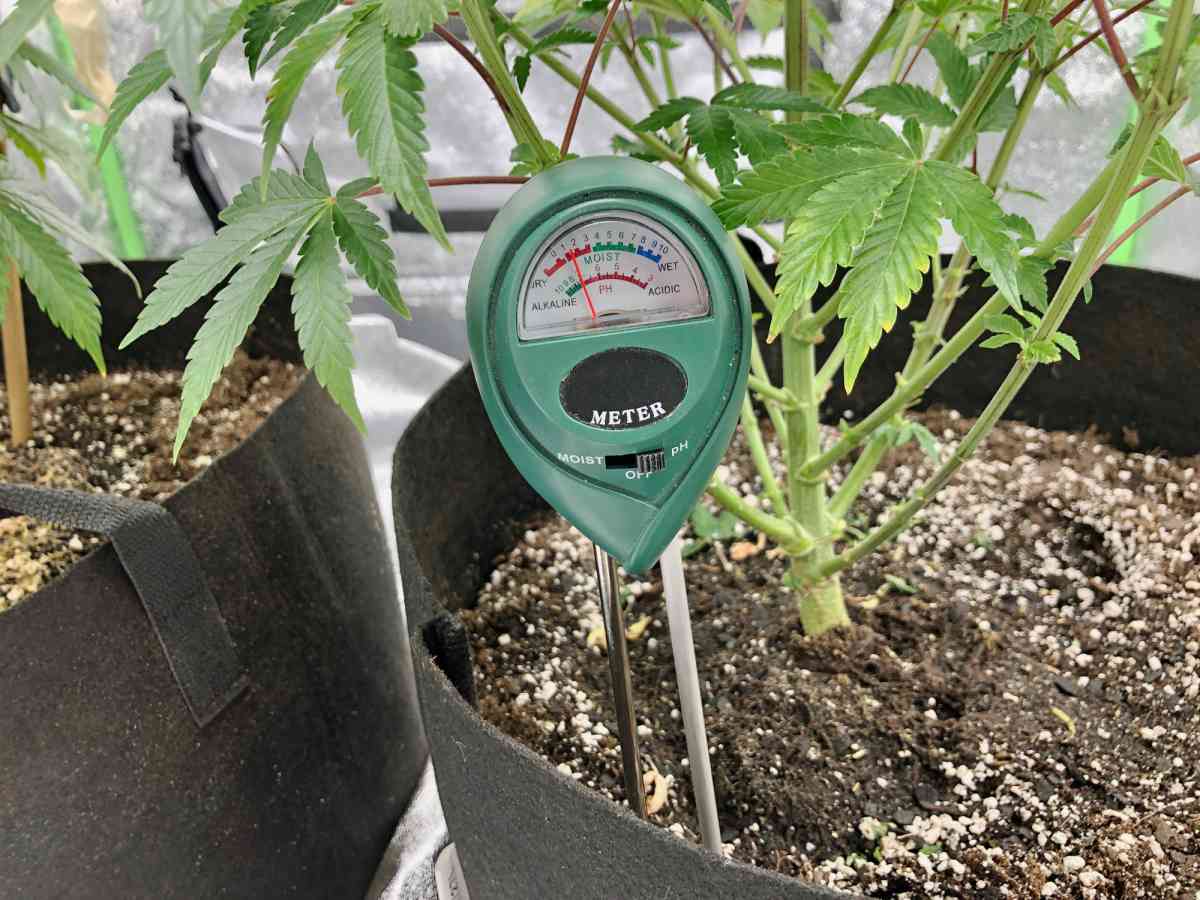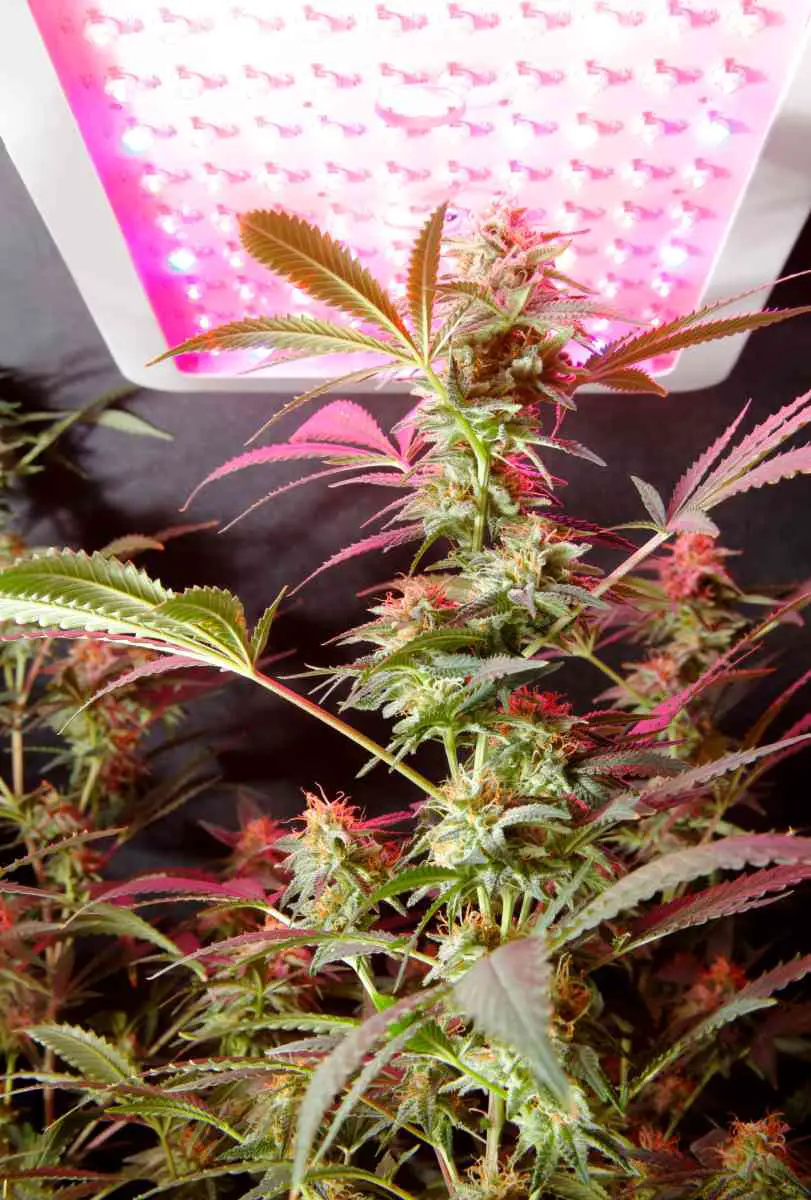To remove or not is the big question surrounding fan leaves at different times during the plant’s growth. Plant’s fan leaves are especially vital resources.
The buds need enough leaves to enable the photosynthetic process, but the bud sites miss the light when there are too many leaves. In any case, the plant will also be expending more energy to keep the leaves alive.
Fan leaves have an important role in the growth and maturity of buds. They fuel the plant’s food production through photosynthesis.
However, when left unchecked, the fan leaves can sometimes be a bother, blocking the very light the buds need to fatten up and nurture the cannabinoids and terpenes in them.
It is easy to get bogged down by the information around fan leaves and defoliation in general. Sometimes, people take too many leaves that the plant doesn’t have enough granaries to sustain its growth and bud development.
Expert growers know just the right balance of fan leaves the plant needs, and most importantly, when it’s necessary to cut fan leaves off.
Should I Remove Fan Leaves During Flowering?
You should remove fan leaves during flowering only when they form a thick canopy that light can’t penetrate nor the air circulate freely. Removing excess fan leaves opens the plant up for proper light exposure and channels its energy from vegetative growth to bud formation and development.
The reasoning behind the removal of fan leaves aligns with any other form of defoliation. Some strains grow big, producing many leaves that have to be cut for the buds to blossom.
And while people question fan removal a lot, defoliation isn’t unique to cannabis plants. Other plants are pruned for the same reasons— optimum growth and high yields!
Removing fan leaves come with a caveat. Not all cannabis strains will need you to cut the fan leaves off.

Most autoflowers strains are pretty thin and grow vertically in a way that leaves the whole plant exposed. Removing fan leaves will only stress them without any notable change in light exposure and aeration.
Another factor to consider is the plant’s lifecycle. Strains that mature faster aren’t the best for extreme defoliation during flowering because any aggressive defoliation can reduce yield considerably.
During flowering, the plant detracts from vegetation and channels that energy to bud production. When you prune it aggressively, it will take longer to heal and won’t have enough time to fatten the buds by the time you harvest it.
For bushy strains that grow big and take longer to mature, removing fan leaves is necessary to open them up, allowing the light to reach lower bud sites. They also have a lengthier lifecycle that affords them enough time to heal before bud formation commences.
Tips to Remove Fan Leaves During Flowering
Removing the fan leaves during flowering is a risky, high-yielding technique that might cost you your precious buds when done wrong.
The amount of stress you subject the plant to should be as minimal as possible. Otherwise, removing the fan leaves will inhibit the outcome you want.
Start by removing the lower yellowing/drying fan leaves to foster air circulation from the ground up. Remove the fan leaves the plant doesn’t need or is going to lose anyway.
Then open the plant up, removing fan leaves that are attached to the plant’s main branches. Since plants are supper susceptible during flowering, you can remove a bunch of fan leaves at a time.
Removing the fan leaves in cycles allows the plant to heal faster, thus not losing a lot of time.
Other experts also opine that removing the fan leaves in small chunks could induce the fight-or-flight reaction in the plant as it thinks it’s a predator eating its leaves up, and so it speeds up the bud production to survive in the risky environment.
Avoid aggressive fan leaf removal techniques like schwazzing if you don’t know what you’re doing.
Schwazzing advocates for removing all fan leaves beneath the top three nodes during the start of flowering and again at the third week into flowering.
Be gentle with the ladies; the goal isn’t to strip them naked, leaving only stalks dancing in the wind. The goal is to enhance light exposure to the bud sites and improve air circulation within the plant.
The goal is to improve yield, not aesthetics!
Can Buds Still Grow Without Fan Leaves?
The buds cannot grow without fan leaves. The fan leaves are the most important leaves on the cannabis plant because they’re broad. Their big size helps trap enough light for photosynthesis. Through the process, the plant’s food reserves are maintained, thus they have enough energy to develop the buds.
The fan leaves are also filled with stomata, small holes through which the plant breathes. The plant gives out Oxygen while under the light and takes in Co2 from the environment.
The Co2 is a raw material for photosynthesis. The plant will use carbon dioxide and light energy to manufacture the sugars that the plant needs to fatten the buds. Oxygen is the byproduct of the process.
The fan leaves are especially useful during flowering because the plant needs more energy to ripen the buds and enrich the compounds. Removing fan leaves can stagnate the buds’ development and reduce yield.
Fan leaves are far more useful that growers credit them for. Growers talk about buds—all the damn time. But there wouldn’t be buds worth talking about without fan leaves.
The thought of growing weed plants without fan leaves takes root from extreme training.
Some growers obsess with opening the plant up for proper light penetration that they forget how photosynthesis works.
The fan leaves are the solar panels of the plant. The plant should have enough of them to sustain its life from seedlings to senescence.
Without them, the plant’s food supply is in jeopardy. You can defoliate, but leaving near-naked stalks doesn’t do your plants any good.

Do Fan Leaves Grow Back?
The fan leaves can grow back when you cut them in the earlier stages of growth. The fan leaves grow back a little faster during the vegging stage because the plant’s focus is on creating enough ‘solar panels’ for photosynthesis.
If you, however, cut the fans too late into flowering, they may have little time to grow back before the buds are ready and the plant senesces.
Are Fan Leaves Important?
Fan leaves are the most important organs for the plant’s survival. The fan leaves trap the light, thanks to the chlorophyll in the leaves. The plant needs this light to manufacture the sugars that sustain it throughout the growth phases.
The fan leaves help the plant to breathe. The fan leaves have openings called the stomata through which the plant takes in the CO2 and releases oxygen into the environment.
Fan leaves are also essential in transporting hormones that are necessary for the plant’s flowering.
The fan leaves also work as storage granaries. The cannabis plant stores its extra supplies in the fan leaves, only using them when the plant needs them.
Are Big Fan Leaves a Good Sign?
Big fan leaves are a good sign because it points out that the plant has had optimum growth conditions. Big fan leaves often translate to bigger yields because the buds have enough energy to grow and fatten up.
When the fan leaves are healthy, the buds are healthy because the same conditions that favor fan leaves growth also favor bud development.
Though big fan leaves are a good sign that something good is happening to your plant, and the harvest will be huge, you should tame them.
When the huge fan leaves are left for long, they cast shadows on the bud sites beneath them. The shadow inhibits access to light, and thus you harvest low-quality, small buds.
Bigger fan leaves can also show if your plant has access to too much nitrogen.
If the fan leaves still grow bigger in the flowering stage, you might want to flush the grow soil and reduce nitrogen. That way, the plant can shift from vegetating to bud fattening.
Do Fan Leaves Fall Off During Flowering?
Towards the end of the flowering phase, some fan leaves will turn yellow and fall off the plant. This is normal because the plant is focusing on nurturing the buds as opposed to vegetative growth.
The resources that the plants could have used to nourish more fan leaves is now used to fatten the buds.
Still, the plant will only lose the fan leaves it can afford to lose. When it happens naturally, it has no harm to the plant.
Should You Remove Large Fan Leaves During Veg?
You should remove large fan leaves that obstruct light during the veg stage. Defoliating at the vegging stage is good because it opens up the plant and gives it enough time to heal before flowering starts.
Most forms of training happen at the vegging stage because that’s where the plant’s vegetative energy is at the peak. The plant, at the veg stage, is not only creating enough leaves for photosynthesis, they’re also creating a formidable structure for the coming buds.
Remove fan leaves that are growing inward. They don’t spread out to trap the light and will most likely be spending the plant’s energy for no reason.
Fan leaves that are weak and dying should also face the cut. The goal is to leave only enough fan leaves to sustain the plant, open the plant for better light exposure and airflow.
Some growers also remove lower bud sites to focus the plant’s resources on nourishing buds on the upper bud sites. They’re always healthier than the buds on the lower buds sites.
In summary, removing fan leaves during flowering can make or break your yield. Tread carefully, removing only the bits that block the light and retaining enough fan leaves to sustain the plant till harvesting.
It’s an art!

